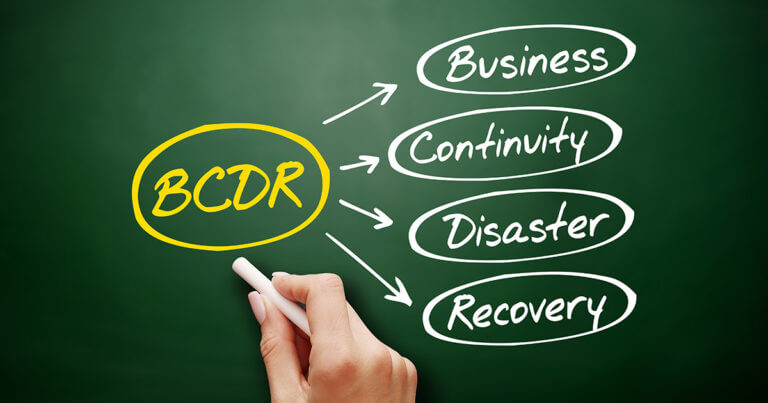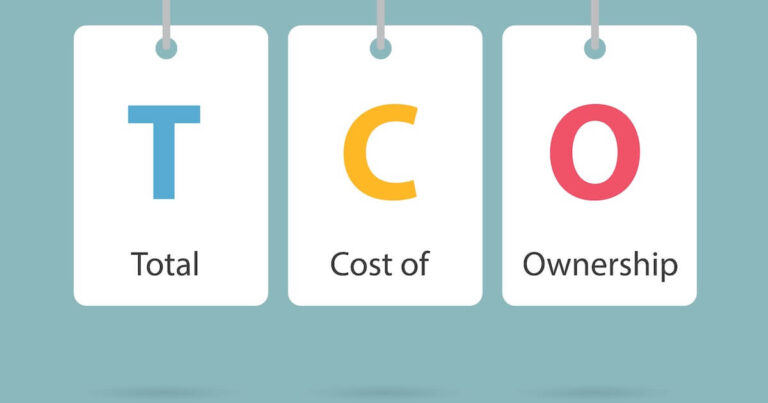According to IDC, on average, an infrastructure failure can cost USD $100,000 an hour, and a critical application failure can cost USD $500,000 to USD $1 million per hour.
Businesses now recognize that some services of the organization have to be delivered continuously without interruption. Global pandemic, recession, natural disasters, cyberattacks, and other past incidents have brought to light the importance of maintaining resilient and secure IT infrastructure.
Therefore, instead of focusing only on resuming the business in the shortest possible time, the endeavor should be creating an IT Business Continuity and Disaster Recovery Plan to ensure that critical operations continue to be functional even during a disaster. The ideal plan would be one in which the end user will not be aware of the occurrence of the disaster since client services will continue as before.
10 Step-By-Step Guide To Build IT Business Continuity Plan
Now if you are thinking of how you can ensure IT business continuity that helps you be resilient and sustainable to all kinds of hindrances, we have prepared a list of 10 essential steps that should be considered for a robust IT disaster recovery plan.
1. Create An Inventory
For a business, it is important to identify the IT resources needed for an uninterrupted business operation exactly. In your business continuity plan, you must define IT resources – systems, hardware, and software you will always be needed in different situations and scenarios. You can have an inventory of IT resources that would be affected in the events and emergencies of a flood, fire, hurricane or power outage on your premises.
2. Establish A Recovery Timeline
When you complete documenting your IT inventory, focus on documenting certain recovery goals and timeframes essential for certain systems that need to be back in operation ASAP. For example, healthcare is one such industry that can afford a recovery timeline of mere minutes, while remaining industries may find longer timelines to be tolerable.
You can also define RTO and RPO Objectives as well to understand the amount of time permissible for IT systems. RTO (Recovery Time Objective) is the amount of service downtime that a business can accept. It is the acceptable delay between the disaster or the interruption of service and restoration of the service. RPO (Recovery Point Objective) is the amount of data loss that a business can accept. It is the time between data recovery points or the backup of the system which will be used to restore the application in case of failure.
3. Communicate
Communication is key to any IT business continuity and disaster recovery plan. You proactively communicate with your employees to know how their work would be impacted during certain systems failures or network unavailability for a period of time. Apart from the employees, it is recommended to go for buy-in from key stakeholders. You must ensure that everyone is on the same table when it comes to understanding IT operations and potential effects and what would happen next, and who would be responsible for resolving the issues.
4. Backup Your Data
You have different options available for data backups, such as internal off-site backups, vendor-supplied backup and cloud storage. You can’t rely on backup data physically on-premises due to the risk of a natural disaster. Here, it is important to note that not every piece of data needs to be backed up. You must proactively define which applications and information are mission-critical and which data is static and do not need to back up more than once. You can also consult with a trusted managed services partner to take help to weigh the issue and decide which is the better option for your positions.
5. Consider Physical Damages
Before the catastrophe hits, every business usually thinks they are safe from disruption. Though you have migrated to the cloud, you also need to plan for physical damage to your facilities and equipment due to a natural disaster. It leads to issues in operating business such as power outages, cable cuts and alike others that could bring your business to its knees. In such scenarios, be sure to have a backup generator that you can use to afloat immediately after a disaster.
Learn why you should consider a strategy for disaster recovery in cloud computing.
6. Consider The Human Factor
There’s scant evidence that process improvements, security training or technology advances are reducing human errors in IT operations. Still, humans proved to be a source of disaster and lead to error that is considered the top cause of downtime. However, the reason behind the error could be malicious or unintentional. It is crucial to lock down who has administrative rights on your systems. Employee and third-party vendors should only have access permissions to the systems and data they need. So, to avoid errors that could cost companies millions of dollars, make sure staff members are proactively educated about identifying phishing emails.
7. Consider Insurance
Opting for catastrophe insurance as part of your business continuity and disaster recovery plan can be just another option if you are worried about the costs of recovery. Insurances like this will not only cover your IT equipment but also examine the broader consequences and losses following a disaster.
8. Test Your Disaster Recovery Plan
You must test your IT disaster recovery plan after some intervals, and preferably twice, per year. Technologies are evolving, and systems require updates. Testing your business continuity plan allows you to track health checks of your systems and their growing requirements. You can also document the findings of your tests so that you can fix them on time and that these are ready in case of a real disaster. In order to do that, you can take the help of a trusted MSP who can help you learn about your options for remediation.
9. Combine Disaster Recovery With Business Continuity
IT is crucial for all business sizes and shapes. But, it is one of the dimensions when a business recovers from disaster. You should think about merging your disaster recovery plan with business continuity as it helps you cover organization-wide strategy and get the essentials crucial for maintaining business operations during and after a disaster. Create and test a full business continuity plan to be confident that you can meet any unexpected event head-on.
10. Find The Right Partner
Designing a disaster recovery plan is not a one-time job. It requires continuous efforts and active maintenance over time with new procedures, technologies, and equipment based on changing business requirements. You can also tie-up with an MSP to get another set of eyes on your disaster recovery plan or to get expert advice on how to create one.
Conclusion
Building a strong, resilient IT business continuity plan with disaster recovery is essential. It does not just help your company stay afloat but also from repercussions of major disasters such as damaged reputation, loss of data, loss of revenue, instability, and reduced employee productivity.




